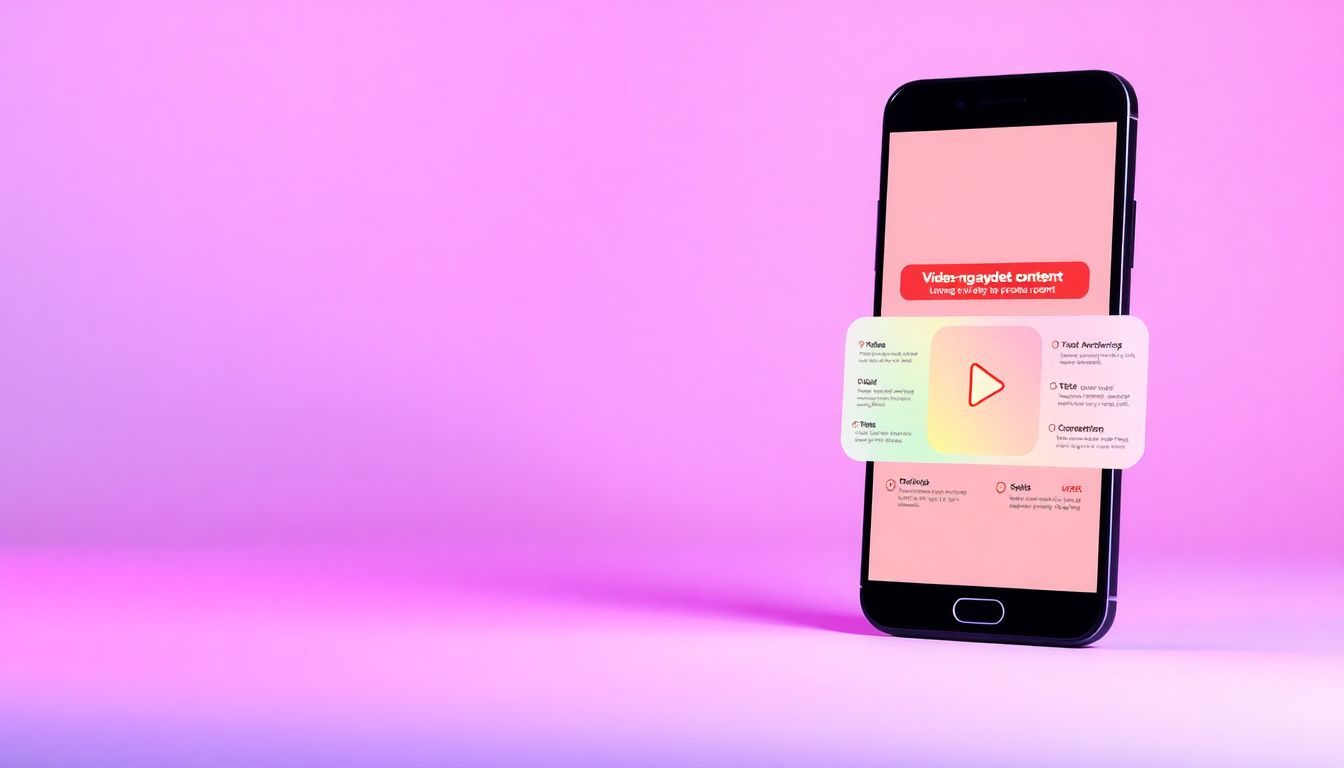Getting your content out there and loved by the right people can be tricky. Sometimes, it feels like shouting into the void instead of reaching your audience effectively. If you’re tired of putting effort into content that gets lost, you’re not alone.
Keep reading, and I promise you’ll pick up some simple but useful ideas to get your content found and enjoyed. From making smarter choices about what to share to picking the right channels, you’ll see how small changes can make a big difference. No need for magic — just clever approaches that work.
In this piece, I’ll walk you through how focusing on your audience, using what you already have, and planning smartly can turn your content distribution into a real game changer.
Key Takeaways
Key Takeaways
- Start by reviewing your existing content to find what has performed well. Repurpose or update it to reach more people without creating everything from scratch.
- Set clear goals and track specific metrics like traffic, engagement, or leads to measure success and guide your tactics.
- Choose the right platforms based on your content type and where your audience spends time, ensuring your messages are seen by the right people.
- Focus on videos, especially short-form ones, as they are in high demand. Add captions and experiment with styles to connect better with viewers.
- Use visual content like infographics to make complex info easy to understand and increase chances of sharing and new visitors.
- Employ AI tools for tasks like keyword research, editing, or analyzing performance, saving time and improving content quality.
- Engage authentically by responding to comments, sharing user content, and building relationships to boost trust and loyalty.
- Automate routine tasks like scheduling and monitoring with tools to stay consistent without extra effort.
- Regularly review your data to see what works and adjust your plan accordingly for better results.
- Revisit and update older content to keep it relevant and extend its reach through republishing or resharing.
- Stay aware of industry trends and new channels to keep your content fresh and relevant in a changing digital world.

Assess and Use Existing Content for Distribution Potential
The first step in creative content distribution is taking stock of what you already have. Look at your blog posts, videos, infographics, or podcasts—anything that’s already out there. These assets can be repurposed or amplified to reach a wider audience.
Identify pieces that performed well previously. For example, a blog post with high clicks or shares likely has more life and can be pushed again through different channels.
Think about how you can turn an existing article into a shorter social media post, a video clip, or an infographic. Repurposing content saves time and helps you get more mileage out of what you’ve already created.
Don’t forget to update older content with new data or insights, making it relevant for today’s audience. Doing so can boost its chances of getting rediscovered and shared.
Always measure the distribution potential of your content—look at engagement metrics and search trends. Tools like Google Analytics or social media insights can show which content pieces are worth boosting further.
Set Clear Goals and Metrics to Measure Success
Before hitting “publish,” you need to know what success looks like. Whether it’s increasing brand awareness, generating leads, or driving website traffic, clear goals help shape your content distribution strategy.
Once your goals are in place, pick the right metrics. For example, if you want more traffic, focus on clicks and page views. If your goal is engagement, track likes, shares, and comments.
It’s helpful to set milestones—like a 20% boost in video views or 50 new leads per month. These give you a target to aim for and make it easier to evaluate what’s working.
Use tools like [Hootsuite](https://hootsuite.com/) or [Google Data Studio](https://datastudio.google.com/) to monitor your metrics consistently. Regular check-ins ensure you stay on track and adjust your tactics if needed.
Remember, clear goals and measuring progress keep your content distribution focused and effective—otherwise, you might be throwing content into the void and hoping for the best.
Select the Best Platforms Based on Your Audience and Content Type
If you want your content to hit the mark, choose your channels wisely. Not all platforms suit every type of content or audience.
For visual content like videos and infographics, Instagram and TikTok are top choices. Remember, **83% of consumers want more video content from brands in 2025**[1], so prioritizing short videos here makes sense.
For B2B content, LinkedIn remains a leading platform—89% of B2B marketers use it for lead generation. If your target is professional audiences, this is where you should be.
Blog posts and articles perform well on websites and niche online communities, but don’t forget about Reddit or Quora for reaching niche groups or answering specific questions.
Evaluate your audience’s habits: Do they prefer quick clips, podcasts, or detailed articles? Match your content format with the platform where your audience spends their time. This way, your message doesn’t get lost in translation.
Choosing the right channels ensures your content doesn’t just exist but actually reaches and resonates with the people you’re trying to engage.

Leverage Video Content to Meet Growing Consumer Preferences
With 83% of consumers wanting more video content from brands in 2025, prioritizing video is a smart move.
Short-form videos, like reels or TikToks, are especially effective because they’re quick, engaging, and easy to consume on mobile devices.
Create eye-catching snippets from your existing videos or produce new bite-sized clips that showcase your products or share behind-the-scenes looks.
Don’t forget to add captions—many viewers watch videos without sound—so your message gets across even on mute.
Experiment with different styles—tutorials, customer testimonials, or humorous clips—to see what resonates best with your audience.
Tools like Canva or InVideo can help you produce professional-looking videos without breaking the bank.
Host your videos on platforms where your audience hangs out, like Instagram, TikTok, or YouTube Shorts, and promote them across other channels.
Utilize Visual Content Like Infographics to Boost Engagement and Shareability
Infographics are 30 times more likely to be read than lengthy articles, and they can lead to a 12% boost in website traffic.
Design clear, visually appealing infographics that simplify complex data or highlight key points from your content.
Use tools such as Piktochart or Canva to create professional-quality graphics easily.
Share infographics across social media, embed them in blog posts, or include them in email campaigns to increase reach.
Embed your infographics on relevant industry sites or forums to attract backlinks and improve SEO.
Focus on topics your audience cares about, and keep the design uncluttered for maximum impact.
Integrate AI Tools to Improve Content Performance and Efficiency
About half of writers are using AI tools to make their content better, faster, and more targeted.
Leverage AI for keyword research, headline generation, or editing to save time and boost quality.
Many platforms, like Grammarly or Jasper, can help craft more natural and engaging language.
Use AI analytics tools to identify what type of content performs best and refine your strategy accordingly.
Test different prompts or outlines to see which ideas generate the most engagement.
Remember, AI is a tool—your human touch still makes the final difference.
Focus on Building Relationships Through Authentic Engagement
Content isn’t just about broadcasting; forming genuine connections matters too.
Respond to comments, ask for feedback, and participate in conversations on social media.
Share user-generated content to show appreciation and foster community.
Use polls and Q&A sessions to understand your audience’s needs and preferences.
Personalize your responses to make followers feel heard and valued.
This kind of authentic engagement builds trust and loyalty over time.
Automate Routine Distribution Tasks to Save Time
Automation tools like Buffer or Hootsuite can schedule posts across multiple platforms at once, freeing up your time.
This ensures your content is consistently shared at optimal times, even when you’re busy with other tasks.
Set up recurring posts for evergreen content, so you don’t have to recreate them from scratch.
Use analytics from these tools to find the best times for posting based on engagement data.
Automate monitoring of mentions and hashtags to stay on top of conversations without manual effort.
Automation keeps your distribution steady without sacrificing your personal touch.
Monitor and Adjust Your Distribution Strategy Based on Performance Data
Regularly reviewing analytics helps you understand what’s working and what’s not.
Track metrics like reach, engagement, conversion rates, and referral traffic to different content types and platforms.
Compare your results against your set goals to see if adjustments are needed.
If a specific platform isn’t delivering results, don’t hesitate to reallocate your efforts elsewhere.
Use insights to experiment with new formats or timing to find what clicks with your audience.
Staying flexible ensures your distribution remains effective and aligned with changing trends.
Republish or Reclaim Content to Maximize Its Reach
Old content still has plenty of life—don’t let it gather dust.
Update outdated information, add fresh perspectives, or republish with new visuals to give it a second wind.
Turn blog posts into videos, podcasts, or slide decks to diversify how your audience consumes it.
This saves you from creating new content from scratch and boosts your content footprint.
Consider syndicating your top-performing content to other platforms or partners to extend its reach.
Just be mindful of duplication issues—adding unique value or updating details helps avoid SEO penalties.
Stay Ahead With Industry Trends and Breakthroughs
Keep an eye on what’s happening in your niche and the broader content world.
Follow industry leaders, attend webinars, or subscribe to relevant newsletters to spot new opportunities.
Adapt your distribution tactics by incorporating new channels or formats as they gain popularity.
For example, as social media advertising spend reaches an estimated $276.7 billion in 2025, consider investing more here.
Staying aware of trends allows you to be an early adopter rather than playing catch-up.
This proactive approach helps keep your content relevant and engaging for your audience.
FAQs
Focus on identifying where your target audience spends time online and prioritize distribution on those platforms to maximize engagement and relevance.
Identify valuable parts of your current content, adapt formats to suit different channels, and refresh messaging to extend its reach and lifespan.
Monitor engagement metrics like shares, comments, click-through rates, and conversions to evaluate how well your content connects with your audience and drives results.
Create an editorial calendar, set deadlines for each platform, and use scheduling tools to maintain consistency across channels.
